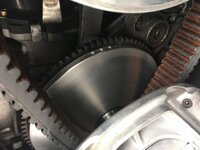Mountainhorse note:
Continued from this thread:
http://www.snowest.com/forum/showthread.php?t=424500&page=4
I've moved/continued the very good thread here for continued reading.
I'm leaving for a couple weeks but when I get back I'll be trying this setup. Loving my current setup but since you guys all came from that to what you're running now, figure I gotta try it. I'm currently down to 77.8 grams which is significantly lower than anyone else I know of here in AK. So I'll give some sealevel elevation feedback 3 weekends from now. Excited to tinker.
Last edited by a moderator:



